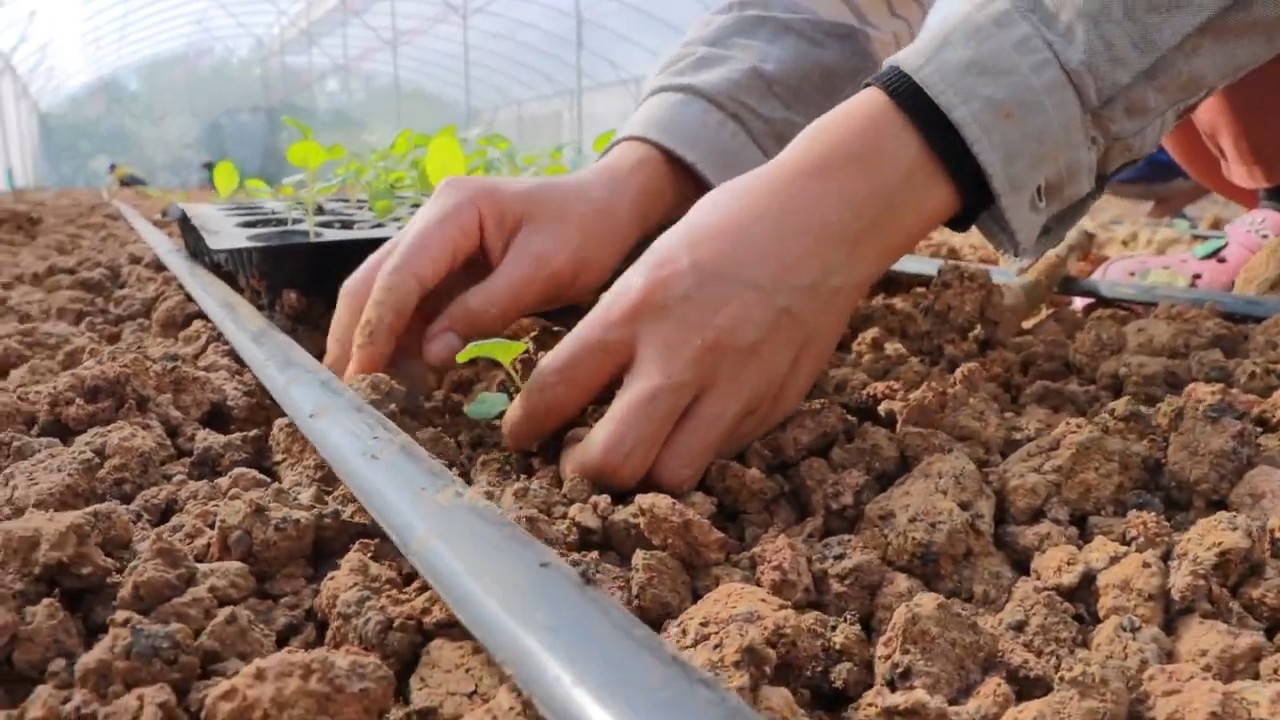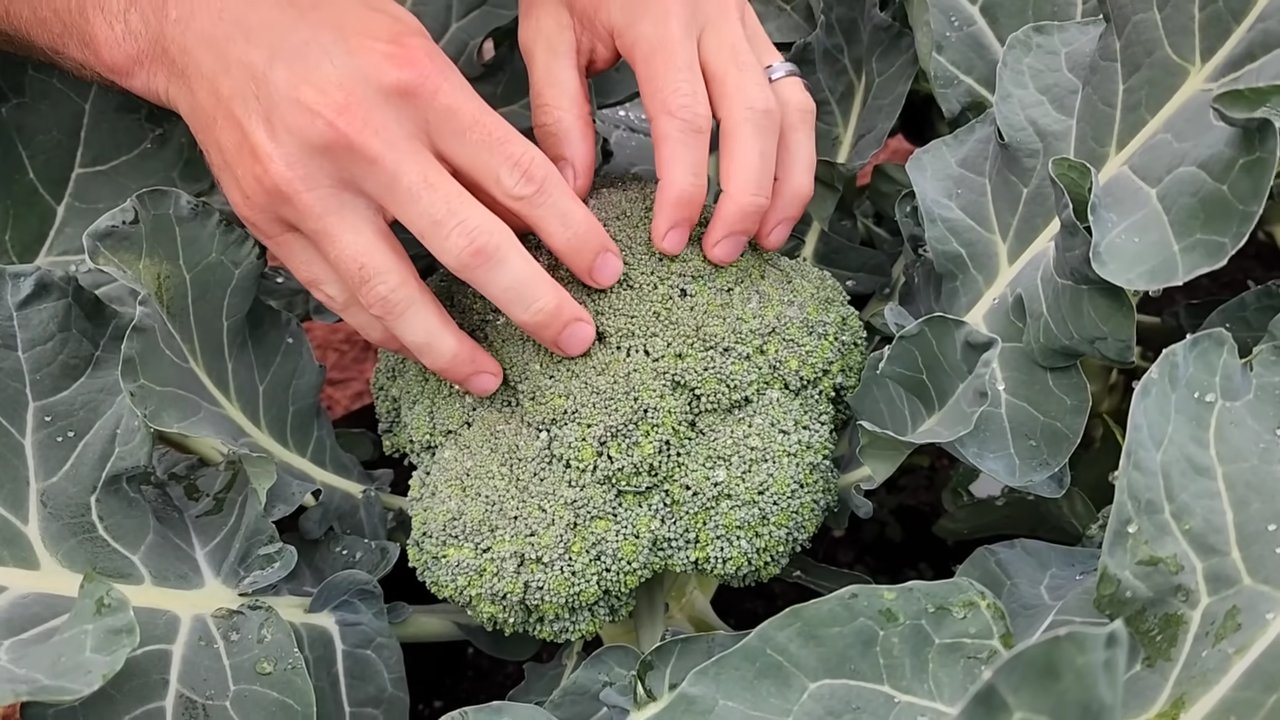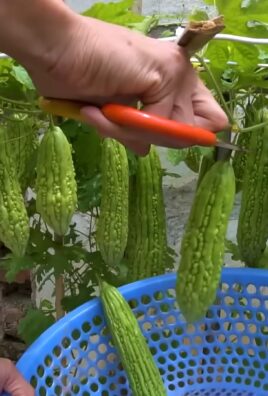Net House Broccoli Growing: Your Shield Against Pests and Perfect Harvests!
Have you ever dreamt of plump, vibrant broccoli heads, untouched by pesky insects and thriving in your own backyard? I know I have! But the reality of battling cabbage moths, aphids, and other garden invaders can quickly turn that dream into a frustrating nightmare. That’s where the magic of a net house comes in. For centuries, gardeners have sought ways to protect their precious crops, and while modern pesticides offer a solution, many of us are looking for more natural and sustainable methods. Think of the net house as a high-tech evolution of the humble row cover, offering superior protection and creating a microclimate that broccoli absolutely loves.
Why is net house broccoli growing so essential? Well, beyond the obvious pest control, it allows you to cultivate this nutritious vegetable even in regions with challenging climates or heavy insect pressure. Imagine harvesting basket after basket of perfect broccoli, knowing you’ve done it without relying on harmful chemicals. This DIY guide will walk you through everything you need to know to build and utilize your own net house, transforming your broccoli growing experience from a struggle into a success. I’m excited to share these tips and tricks with you, so let’s get started on your journey to bountiful, bug-free broccoli!

Building Your Own Broccoli Paradise: A DIY Net House Guide
Okay, broccoli lovers, listen up! I’m going to walk you through building your very own net house to protect your precious broccoli plants from pests and the elements. Trust me, after battling cabbage moths and unexpected frosts, this is a game-changer. This guide is detailed, so grab a cup of coffee (or tea!) and let’s get started.
Why a Net House for Broccoli?
Before we dive into the nitty-gritty, let’s quickly cover why a net house is so beneficial for growing broccoli:
* Pest Protection: The primary reason! Netting keeps out cabbage moths, cabbage white butterflies, aphids, flea beetles, and other pesky insects that love to munch on broccoli leaves and heads. No more caterpillars ruining your harvest!
* Weather Protection: A net house can provide a buffer against harsh weather conditions like strong winds, heavy rain, and even light frost. This helps your broccoli grow more consistently and reduces stress on the plants.
* Improved Growing Conditions: By creating a more controlled environment, you can optimize temperature and humidity levels, leading to healthier and more productive broccoli plants.
* Reduced Pesticide Use: Because the netting keeps pests out, you’ll significantly reduce (or even eliminate!) the need for chemical pesticides. This is great for your health, the environment, and your wallet.
Planning Your Net House
Before you start building, you need a plan! Here’s what to consider:
* Size: How much broccoli do you want to grow? The size of your net house will depend on the number of plants you plan to cultivate. Measure your garden space carefully and consider the mature size of your broccoli plants (usually around 2-3 feet wide). I always recommend going a little bigger than you think you need – you can always grow more!
* Location: Choose a sunny spot in your garden that gets at least 6-8 hours of direct sunlight per day. Make sure the area is well-drained to prevent waterlogging.
* Materials: You’ll need to gather the following materials:
* Framing: Options include PVC pipes, metal conduit, or wooden posts. PVC is lightweight and easy to work with, but metal conduit is stronger and more durable. Wood is a good option if you want a more rustic look. I personally prefer PVC for its cost-effectiveness and ease of assembly.
* Netting: Choose a fine mesh netting specifically designed for insect protection. The mesh size should be small enough to keep out even the smallest pests. You can find netting made from various materials, such as polyethylene or nylon.
* Connectors: If you’re using PVC or metal conduit, you’ll need connectors to join the pieces together. These come in various shapes and sizes (e.g., elbows, tees, crosses).
* Fasteners: You’ll need fasteners to attach the netting to the frame. Options include zip ties, clips, or staples.
* Ground Anchors: To secure the net house to the ground, you’ll need ground anchors. These can be metal stakes, concrete blocks, or even large rocks.
* Door/Entrance: Decide how you’ll enter and exit the net house. You can create a simple flap that overlaps or build a more elaborate door with a zipper or Velcro closure.
* Budget: Determine how much you’re willing to spend on your net house. Prices for materials can vary, so shop around and compare costs.
Step-by-Step Construction Guide
Alright, let’s get our hands dirty! Here’s a detailed guide to building your net house:
Phase 1: Building the Frame
1. Measure and Cut the Framing Material: Based on your planned size, measure and cut the PVC pipes (or metal conduit or wood) to the desired lengths. Use a PVC cutter, hacksaw, or wood saw, depending on the material you’re using. Remember to account for the connectors when calculating the lengths. I always double-check my measurements before cutting to avoid mistakes.
2. Assemble the Frame: Connect the pieces of framing material using the appropriate connectors. For PVC, you’ll need PVC cement to glue the connectors in place. For metal conduit, you can use screws or clamps. For wood, use screws or nails. Start by building the base of the frame, then add the vertical supports, and finally, the top frame. Make sure the frame is sturdy and stable.
3. Add Support Beams (Optional): If you’re building a larger net house, you may want to add support beams to the frame to provide extra strength and stability. These can be horizontal or diagonal beams that connect the vertical supports.
4. Install Ground Anchors: Secure the frame to the ground using ground anchors. Drive metal stakes into the ground around the base of the frame, or place concrete blocks or large rocks around the base. This will prevent the net house from being blown over by the wind.
Phase 2: Attaching the Netting
1. Measure and Cut the Netting: Measure the frame and cut the netting to the appropriate size, leaving some extra material for overlap. It’s always better to cut the netting a little larger than you need, as you can always trim it later.
2. Attach the Netting to the Frame: Starting at the top of the frame, attach the netting to the frame using zip ties, clips, or staples. Stretch the netting tightly as you go to prevent sagging. Work your way down the frame, securing the netting to all sides. Make sure the netting is securely attached to the frame to prevent pests from getting in. I find that using zip ties works best for me – they’re easy to use and provide a strong hold.
3. Create an Overlap: Where the edges of the netting meet, create an overlap of at least 6 inches to ensure a tight seal. Secure the overlap with zip ties, clips, or staples.
4. Bury the Bottom Edge (Optional): To further prevent pests from entering, you can bury the bottom edge of the netting in the ground. Dig a shallow trench around the base of the frame and bury the netting in the trench. This will create a physical barrier that pests can’t easily cross.
Phase 3: Creating an Entrance
1. Decide on an Entrance Style: Choose how you want to enter and exit the net house. You can create a simple flap that overlaps, or build a more elaborate door with a zipper or Velcro closure.
2. Build a Simple Flap: To create a simple flap, cut a section of netting that is slightly larger than the opening you want to create. Attach the top edge of the flap to the frame, leaving the sides and bottom free. The flap should overlap the opening by at least 6 inches.
3. Build a Door with a Zipper or Velcro Closure: To build a more elaborate door, you’ll need to create a frame for the door using PVC pipes or wood. Attach the netting to the frame, leaving an opening for the door. Install a zipper or Velcro closure along the edges of the opening to create a secure seal.
Tips and Tricks for Success
* Choose the Right Netting: Make sure you choose a fine mesh netting that is specifically designed for insect protection. The mesh size should be small enough to keep out even the smallest pests.
* Build a Sturdy Frame: A strong and stable frame is essential for a long-lasting net house. Use high-quality materials and ensure that the frame is securely anchored to the ground.
* Ventilation: Ensure adequate ventilation inside the net house to prevent overheating and humidity buildup. You can add vents to the sides or top of the net house, or simply leave a small opening in the netting.
* Regular Inspection: Regularly inspect the net house for any tears or holes in the netting. Repair any damage immediately to prevent pests from entering.
* Weed Control: Keep the area inside the net house free of weeds to prevent them from attracting pests.
* Watering: Water your broccoli plants regularly, especially during dry periods. You can use a drip irrigation system to deliver water directly to the roots of the plants.
* Fertilizing: Fertilize your broccoli plants regularly with a balanced fertilizer. Follow the instructions on the fertilizer label.
Troubleshooting
* Pests Still Getting In: If you’re still finding pests inside the net house, check for any tears or holes in the netting. Also, make sure the netting is securely attached to the frame and that there are no gaps around the edges. Sometimes, pests can enter when you open the entrance, so be quick!
* Netting Sagging: If the netting is sagging, tighten the zip ties or clips that are holding it in place. You may also need to add additional support to the frame.
* Frame Collapsing: If the frame is collapsing, reinforce it with additional support beams or ground anchors. Make sure the frame is made from sturdy materials and is properly assembled.
Alternative Designs

Conclusion
So, there you have it! Creating your own net house for broccoli growing isn’t just a clever gardening hack; it’s a game-changer for anyone serious about harvesting healthy, vibrant, and pest-free broccoli. We’ve walked through the process, highlighting the benefits and addressing potential challenges, and hopefully, you’re now feeling confident and inspired to give it a try.
Why is this a must-try? Because it empowers you to take control of your broccoli crop’s environment. No more battling relentless cabbage moths, aphids, or other hungry critters that can decimate your hard work. A net house provides a physical barrier, offering unparalleled protection without relying on harmful pesticides. This means healthier broccoli for you and a healthier ecosystem for everyone. Beyond pest control, a net house can also moderate temperature fluctuations, shielding your broccoli from scorching sun or unexpected frosts, leading to a more consistent and bountiful harvest.
But the beauty of this DIY project lies in its adaptability. Feel free to experiment with variations to suit your specific needs and resources. For example, if you live in an area with particularly strong winds, consider reinforcing your net house frame with sturdier materials or anchoring it more securely to the ground. You could also incorporate shade cloth along with the netting to provide additional protection from intense sunlight during the hottest months. Another variation could involve creating a taller net house to accommodate larger broccoli varieties or even other leafy greens alongside your broccoli. Think about adding a simple irrigation system inside the net house to streamline watering and ensure consistent moisture levels. You could even integrate companion planting within the net house, using plants like marigolds to further deter pests naturally. The possibilities are endless!
Ultimately, the success of your net house broccoli growing venture depends on your willingness to experiment and adapt. Don’t be afraid to tweak the design, materials, or growing techniques to find what works best for your local climate and gardening style. Remember, gardening is a journey of continuous learning and discovery.
We wholeheartedly encourage you to embark on this rewarding project. Imagine the satisfaction of harvesting your own perfectly formed, pest-free broccoli heads, knowing that you played an active role in their healthy growth. It’s a feeling that store-bought broccoli simply can’t replicate.
And once you’ve built your net house and harvested your first crop, we’d love to hear about your experience! Share your photos, tips, and challenges in the comments section below. Let’s create a community of net house broccoli growing enthusiasts, sharing our knowledge and inspiring each other to achieve gardening success. Your insights could be invaluable to other gardeners who are just starting out. So, get building, get growing, and get sharing! Happy gardening!
Frequently Asked Questions (FAQ)
What exactly is a net house, and why is it beneficial for growing broccoli?
A net house is essentially a framed structure covered in fine mesh netting. This netting acts as a physical barrier, preventing pests like cabbage moths, aphids, and other insects from reaching your broccoli plants. This significantly reduces the need for pesticides and promotes healthier, more robust growth. Beyond pest control, net houses can also help regulate temperature and humidity, creating a more stable and favorable environment for broccoli, especially in regions with extreme weather conditions. They can also offer protection from strong winds and heavy rain, which can damage young broccoli plants.
What materials do I need to build a net house for broccoli?
The specific materials will depend on the size and design of your net house, but generally, you’ll need:
* **Framing Material:** Options include PVC pipes, wooden posts, or metal conduit. PVC is lightweight and easy to work with, while wood offers more stability and a natural aesthetic. Metal conduit is the most durable option but can be more expensive and require specialized tools.
* **Netting:** Choose a fine mesh netting specifically designed for insect control. Look for UV-resistant netting to ensure it lasts for several seasons. The mesh size should be small enough to exclude common broccoli pests.
* **Connectors:** If using PVC pipes or metal conduit, you’ll need connectors to join the frame pieces together.
* **Fasteners:** Use zip ties, clips, or staples to attach the netting to the frame.
* **Anchoring Materials:** Depending on your location and the size of your net house, you may need ground stakes, ropes, or other anchoring materials to secure the structure against wind.
* **Tools:** Basic tools like a saw, measuring tape, drill, and staple gun will be helpful.
How do I choose the right size for my net house?
The size of your net house should be determined by the number of broccoli plants you plan to grow and the available space in your garden. Consider the mature size of the broccoli variety you’re planting and allow enough space between plants for air circulation and easy access for harvesting. It’s always better to err on the side of making the net house slightly larger than you think you’ll need. Also, consider the height of the net house. You’ll want it tall enough to comfortably work inside without bumping your head or damaging the plants.
How do I prevent the net house from blowing away in strong winds?
Anchoring your net house securely is crucial, especially in windy areas. Use ground stakes to anchor the frame to the ground. You can also use ropes to tie the frame to nearby trees or structures. For added stability, consider burying the bottom edge of the netting a few inches into the soil. If you’re using PVC pipes, you can fill them with sand or water to add weight. Regularly check the anchoring system and make adjustments as needed, especially after strong storms.
How often should I water my broccoli plants inside the net house?
Watering frequency will depend on your climate, soil type, and the age of your broccoli plants. Generally, broccoli needs consistent moisture, especially during head formation. Check the soil moisture regularly by sticking your finger a few inches into the soil. If it feels dry, it’s time to water. Consider using a drip irrigation system inside the net house to provide consistent and efficient watering. Avoid overhead watering, as this can create a humid environment that promotes fungal diseases.
How do I pollinate my broccoli plants inside the net house?
Broccoli is self-pollinating, meaning it doesn’t require insects to transfer pollen. However, good air circulation can help facilitate pollination. Ensure that your net house has adequate ventilation to allow for natural air movement. You can also gently shake the plants occasionally to help release pollen.
Can I grow other vegetables inside the net house with my broccoli?
Yes, you can grow other vegetables alongside your broccoli inside the net house. Good companion plants for broccoli include lettuce, spinach, radishes, and herbs like dill and rosemary. These plants can help deter pests and improve soil health. Avoid planting brassicas (like cabbage, cauliflower, and kale) together, as they attract the same pests and diseases.
How do I clean and maintain my net house?
Regularly inspect your net house for any tears or damage to the netting. Repair any holes promptly to prevent pests from entering. Clean the netting periodically to remove dust and debris that can block sunlight. You can use a soft brush and soapy water to gently scrub the netting. At the end of the growing season, disassemble the net house and store the netting in a dry place to protect it from the elements.
What if pests still get inside the net house?
While a net house provides excellent protection, it’s not foolproof. Pests can sometimes enter through small tears in the netting or when you open the net house to tend to your plants. Regularly inspect your plants for signs of pests. If you find any, you can use organic pest control methods like insecticidal soap or neem oil. You can also handpick pests off the plants. Ensure that the netting is properly sealed around the edges to prevent pests from crawling underneath.
How long will a net house last?
The lifespan of your net house will depend on the quality of the materials used and the weather conditions in your area. With proper care and maintenance, a well-built net house can last for several years. Choose UV-resistant netting and durable framing materials to maximize its lifespan. Store the netting properly during the off-season to protect it from sun and weather damage.





Leave a Comment